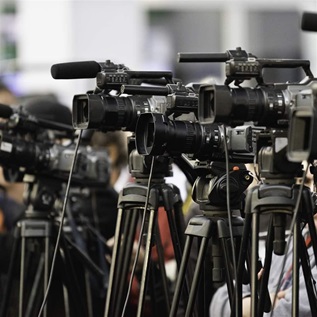Nonpartisan Research Group Finds Potential for Trouble at Polls
Washington, DC- With the mid-term election two weeks away, a comprehensive report on the state of election administration around the country finds cause for concern in a number of states.
An estimated third of all voters will cast ballots on voting systems never before used in a general election, while new procedures and legal battles over voter identification could confuse voters, poll workers or both. Unfinished and just-completed statewide voter registration databases, required as of Jan. 1, 2006 by the Help America Vote Act, have led to some confusion in parts of the country as state agencies combine records and local election officials cede control of their long-held registration rosters.
"The ingredients are there for problems in some parts of the country," said Doug Chapin, director of electionline.org, the nation's leading nonpartisan and non-advocacy source for election reform analysis and information. "Any time you have new procedures, new voting systems that many poll workers and voters might not be familiar with and combine that with an election that could decide the fate of one or both branches of Congress, the potential is there for a messy November 7. The steps that have been taken to improve and modernize elections as part of HAVA could make things worse this year before it makes voting better in the future."
"Election Preview 2006: What's Changed, What Hasn't and Why", issued today by electionline.org, provides an overview of the state of the American electoral system with 14 days remaining before the mid-term vote.
The report details specific election changes in each of the 50 states and identifies 10 "states to watch" on Election Day, detailing reasons why election problems could arise in each.
Among the nationwide findings from the report:
- Concerns about electronic voting machines have been steadily growing since the passage of HAVA, with some advocates and candidates urging voters to use paper absentee ballots and vote from home rather than "risk" casting their votes on electronic voting systems at polling places.
- An 11th-hour decision by the U.S. Supreme Court will allow Arizona to continue to enforce its identification requirements at the polls. Voters will be required to show either a government-issued photo ID or two alternative forms. The legal back-and-forth could confuse both poll workers and voters on Election Day, just as it has some journalists in recent coverage.
- Spurred in part by HAVA, the number of states requiring all voters to present identification before voting has doubled since 2000. New rules that require voters present a state- or federally-issued photo ID have been enacted by legislatures in Missouri, Georgia and Indiana, but have been struck down by courts in all but Indiana. The U.S. House passed a similar measure in September. The Senate has yet to take up the bill.
- The federally-mandated implementation of statewide databases continues to challenge state officials. The U.S. Department of Justice sued New York, Alabama, New Jersey and Maine for failing to complete databases, requiring each state to devise a plan to comply with federal law in time for the November 7 vote.
- While there could be numerous places with problems, ten states in particular bear watching, for changes to procedures, recent legal challenges to state policies, close races and new equipment, or in some cases, a combination of all three. The report names Arizona, Colorado, Connecticut, Florida, Indiana, Maryland, New York, Ohio, Pennsylvania and Washington, detailing what to watch for in each.
The report notes that election administration has undergone more changes - from machines to databases to ID and provisional voting procedures - in the past two years than perhaps any other time in the nation's history. And that is a likely cause of trouble at the polls in some parts of the country.
"Any amount of change breeds some level of uncertainty," Chapin said. "In this case, we have had a tremendous amount of change in the way votes are cast and counted, as well as how voters are registered, identified at polls and provided safeguards, such as provisional ballots, if they experience problems. While we can't predict with any certainty where trouble will be, we can say that our research and experience suggest at least some turbulence on Election Day."
electionline.org is the nation's leading source for nonpartisan and non-advocacy news and analysis of election reform issues. It is funded by The Pew Charitable Trusts through a grant administered by the University of Richmond.
To request a print copy, e-mail: [email protected].
Pew is no longer active in this line of work, but for more information, please visit electionline.org.











